The other day, I was craving something comforting and hearty for our afternoon snack, so I decided to make Lelot Balatong - a creamy, coconut-based porridge that's been a Filipino favorite for generations.
I love making this on rainy afternoons when we need something substantial but not too heavy. The process of toasting the mung beans fills the kitchen with this incredible nutty aroma, and watching the coconut milk slowly transform simple ingredients into this luxurious porridge is genuinely therapeutic.
It's not fancy or complicated, but it's deeply satisfying in a way that only traditional comfort food can be. When I serve it with an extra drizzle of coconut milk on top, watching it create swirls in the creamy porridge, I'm reminded why this has been a beloved merienda choice for so long.
Jump to:
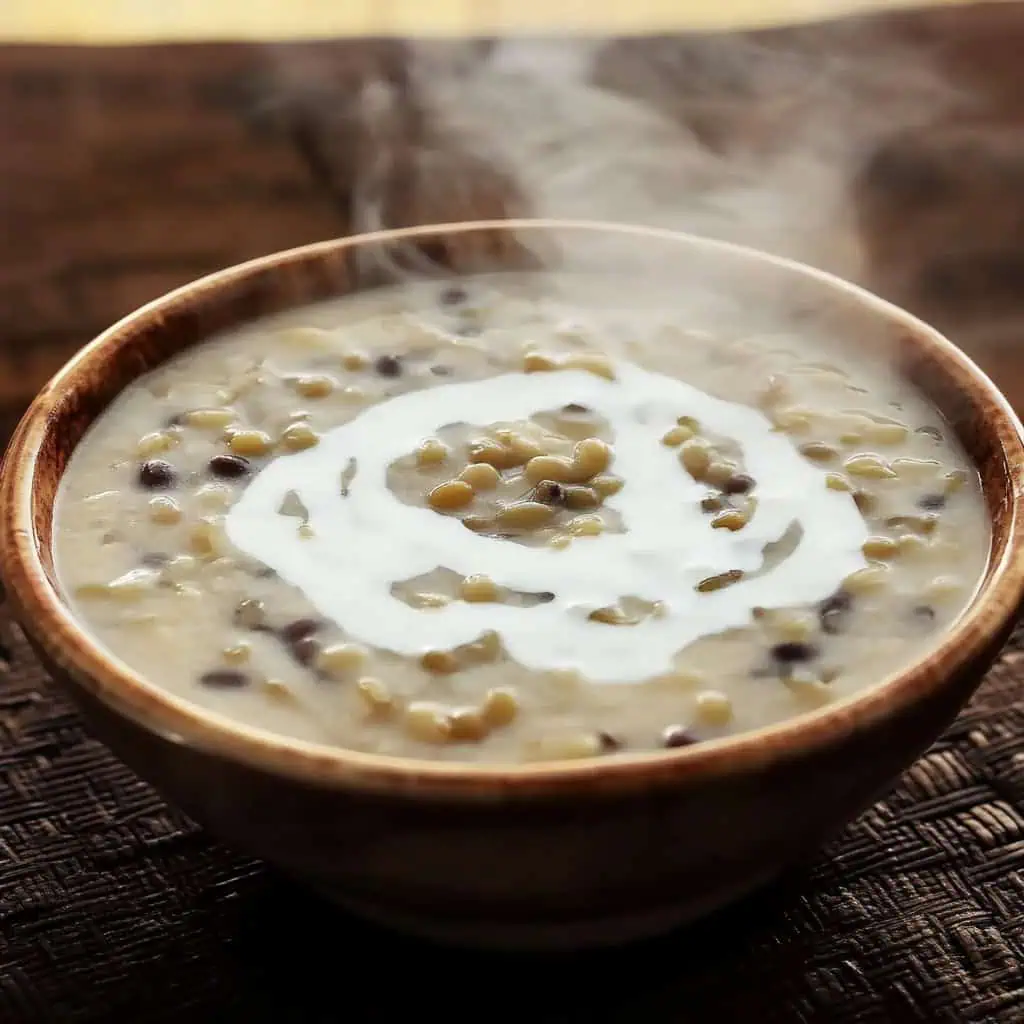
Why You'll Love This Recipe
- Perfect balance of creamy coconut and nutty mung beans
- Budget-friendly yet filling merienda
- Can be made ahead and reheated
- Naturally gluten-free and vegetarian
- Customizable sweetness level
- Rich in protein and fiber from mung beans
Ingredients
These ingredients create the perfect harmony in Lelot Balatong. Mung beans provide a nutty foundation and hearty protein, while glutinous rice adds the comforting, creamy texture that makes this dish so satisfying.
Coconut milk brings rich, tropical sweetness that transforms simple ingredients into something special. The toasting process intensifies the beans' natural flavors, and the careful balance of sugar enhances rather than overwhelms.
Together, they create a dish that's greater than the sum of its parts, economical yet nourishing, simple yet deeply flavorful, and rooted in generations of Filipino culinary wisdom.
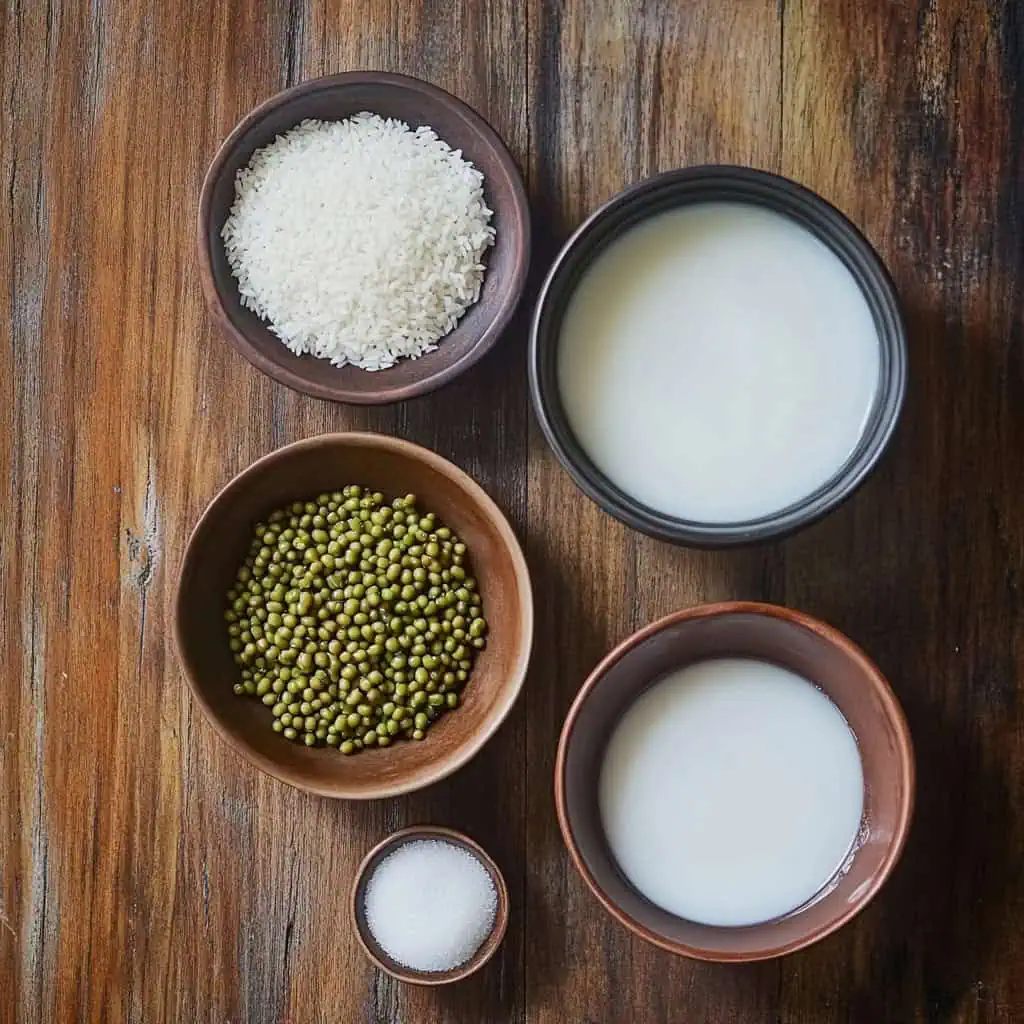
- ½ cup mung beans (monggo/balatong)
- ½ cup glutinous rice (malagkit na bigas)
- 400 ml coconut milk (gata), plus extra for topping
- 1 cup water
- ⅓ cup sugar, adjustable to taste
Equipment
- Medium pot - For cooking the porridge without scorching or boiling over
- Dry skillet - Essential for toasting the mung beans to develop their nutty flavor
- Food processor or mortar and pestle - Used to crack the toasted mung beans, helping them cook evenly while maintaining texture
- Wooden spoon - Perfect for stirring without scratching your pot and prevents the mixture from sticking
- Measuring cups and spoons - For accurate measurements which ensure consistent results

How To Make
- Measure out all your ingredients - mung beans, glutinous rice, coconut milk, water, and sugar.
- Toast the mung beans in a dry pan over medium heat (350°F/175°C). Stir continuously until they turn golden brown and release a nutty aroma, about 5-7 minutes. Allow them to cool completely.
- Once cooled, crack the beans open using a food processor with quick pulses or a mortar and pestle. Aim for split beans, not powder - this creates the perfect texture and ensures even cooking.
- In your pot, combine half of the coconut milk with all the water. Bring to a boil over medium-high heat (375°F/190°C).
- Reduce heat to very low (185°F/85°C) and add the glutinous rice and cracked mung beans. Cook for 20 minutes, stirring frequently to prevent sticking. If the mixture becomes too thick, add a little warm water.
- When the rice and beans are tender and have absorbed most of the liquid, pour in the remaining coconut milk and add sugar. Simmer for 5 more minutes, stirring constantly. The ideal consistency is a creamy porridge that's slightly loose, as it will thicken as it cools.
- Taste and adjust sweetness if needed. Serve hot in bowls with an extra drizzle of coconut milk on top.
- If the porridge thickens while sitting, simply stir in a bit of warm coconut milk to restore the desired consistency.

Tips from Lola's Kitchen
- Toast with patience - Wait for that distinct nutty aroma before removing mung beans from heat; this is the key to authentic flavor
- Cool completely before cracking - Skipping this step can lead to uneven texture in your finished dish
- Stir from the bottom - Use a circular motion, scraping the bottom of the pot to prevent scorching
- Keep heat consistently low once rice is added - This prevents burning and allows ingredients to meld properly
- Gradually add coconut milk - This creates a silkier, more uniform texture than adding it all at once
- Don't rush the process - The slow cooking allows flavors to develop fully and creates the perfect consistency
Substitutions
- Glutinous rice: Regular white rice can work but will produce a less sticky texture
- Fresh coconut milk: Canned coconut milk makes a good substitute; choose full-fat versions for best results
- White sugar: Brown sugar or palm sugar (muscovado) adds a deeper caramel note
- Mung beans: While not traditional, red beans can be used with a similar cooking method (though this makes it a different dish altogether)
- Refined sugar: Coconut sugar offers a more complex sweetness and lower glycemic index
Troubleshooting
- Porridge too thick: Add warm coconut milk or water, a tablespoon at a time, stirring until desired consistency is reached
- Porridge too thin: Continue cooking on low heat while stirring frequently to reduce excess liquid
- Mung beans still hard: They weren't cracked properly before cooking; next time, pulse them longer in the food processor
- Rice remains firm: Add ¼ cup more liquid and continue cooking on low heat until tender
- Burning on the bottom: Your heat is too high; transfer mixture to a new pot and reduce heat significantly
- Coconut milk separating: Heat was likely too high; lower temperature and stir continuously to reincorporate
Storage & Reheating
- Refrigeration: Store in an airtight container for up to 3 days in the refrigerator
- Freezing: Not recommended as it negatively affects the texture of both rice and beans
- Reheating: Add a splash of coconut milk, then heat on low while stirring constantly
- Morning prep: Make a double batch and reheat portions throughout the week for quick breakfasts
- Consistency note: The porridge will thicken significantly when cold; always thin with additional liquid when reheating
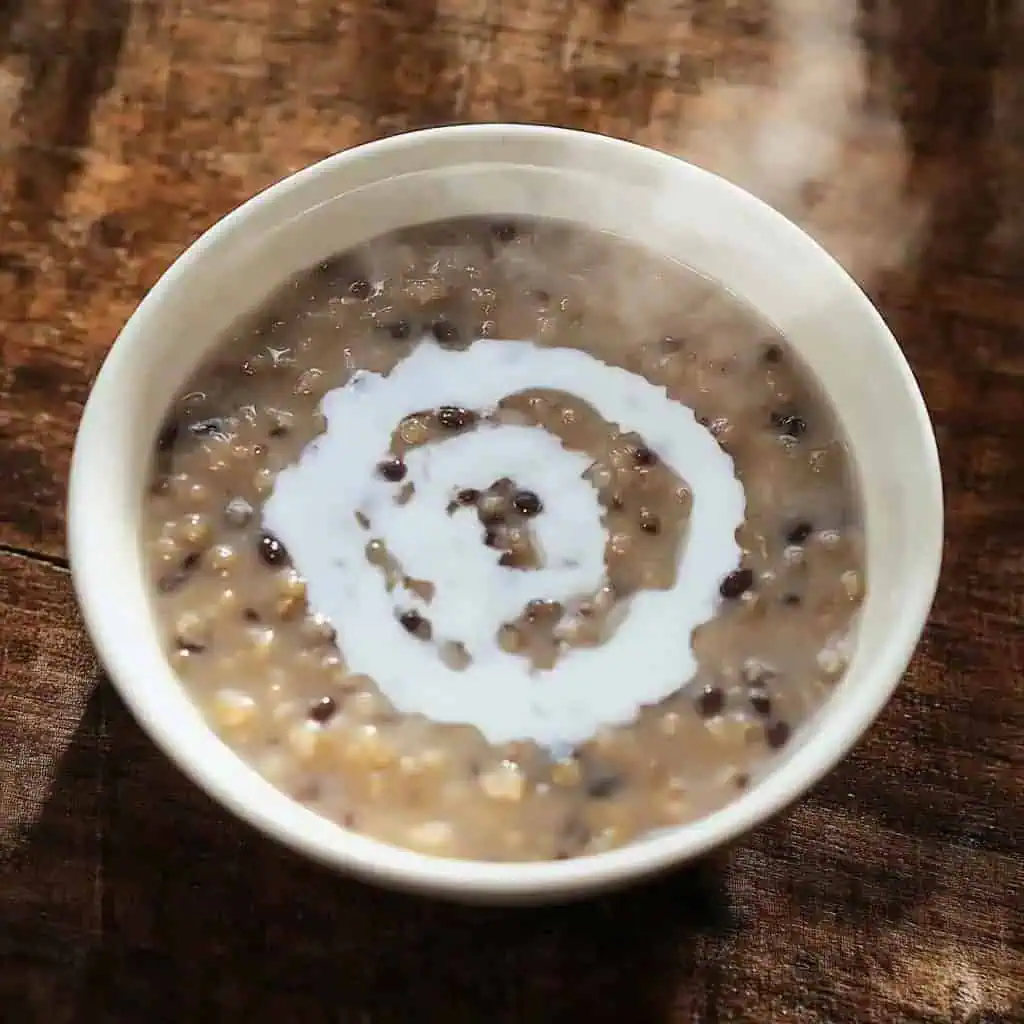
FAQ
Can I make this ahead of time?
Yes, but it will thicken considerably in the refrigerator. When reheating, add coconut milk or water to achieve desired consistency.
Is this recipe gluten-free?
Yes, Lelot Balatong is naturally gluten-free, making it suitable for those with celiac disease or gluten sensitivity.
Can I reduce the sugar?
Absolutely. The sweetness level is entirely customizable. Traditional versions vary from barely sweet to quite sweet depending on the region and family preference.
Why do I need to crack the mung beans?
Cracking helps them cook more evenly and creates better texture in the final dish. Whole beans would take much longer to soften and wouldn't integrate as well with the rice.
Is this healthy?
Lelot Balatong contains protein and fiber from mung beans and healthy fats from coconut milk. While traditional recipes include sugar, you can reduce this to suit dietary needs.
Can I make this in a slow cooker?
Yes, combine all ingredients and cook on low for 4-5 hours, stirring occasionally. Add the second half of coconut milk in the last 30 minutes.
How do I know when it's done?
The rice grains should be fully expanded and soft, the mung beans tender, and the consistency should be like a thick porridge that slowly flows from a spoon.
Related
Looking for other recipes like this? Try these:

Lelot Balatong (Ginataang Monggo)
Equipment
- Medium pot (kaldero) for cooking the porridge
- Dry skillet (kawali) for toasting mung beans
- Food processor or mortar and pestle (dikdikan) for cracking mung beans
- Wooden spoon (sandok na kahoy) for stirring without scratching the pot
- Measuring cups and spoons (Panukat) for accurate measurements
Ingredients
- ½ cup mung beans monggo/balatong
- ½ cup glutinous rice malagkit na bigas
- 400 ml coconut milk gata, plus extra for topping
- 1 cup water tubig
- ⅓ cup sugar asukal, adjustable to taste
Instructions
- First, measure out all your ingredients - you'll need mung beans, glutinous rice, coconut milk, water, and sugar.
- Start by toasting your mung beans in a dry pan over medium heat (350°F/175°C). Keep stirring until they turn golden brown and smell nutty, about 5-7 minutes. Let them cool completely.
- Once the beans are cool, crack them open. You can use a food processor with quick pulses or a mortar and pestle. You want them split, not powdered - this helps them cook evenly while keeping some texture.
- Get your pot ready with half of the coconut milk and all the water. Bring this to a boil over medium-high heat (375°F/190°C).
- Turn the heat down to very low (185°F/85°C). Add your glutinous rice and cracked mung beans. This is where patience comes in - cook for 20 minutes, stirring often so nothing sticks to the bottom. If it looks too thick, add a little warm water.
- When your rice and beans are tender and have soaked up most of the liquid, pour in the rest of the coconut milk and add your sugar. Let it simmer for 5 more minutes, stirring constantly. You're looking for a creamy porridge that's still a bit loose - it will thicken as it cools.
- Taste and add more sugar if you'd like it sweeter. Pour into bowls while it's hot, and drizzle some extra coconut milk on top. Your Lelot Balatong is ready to serve.
- Remember, if it gets too thick while sitting, just stir in a bit of warm coconut milk to bring it back to the right consistency. It should be creamy but still flow from your spoon.
Tips from Lola's Kitchen
- Toast mung beans until you smell a nutty aroma - this enhances flavor
- Don't skip the cooling step after toasting
- Stir from the bottom to prevent sticking
- Keep heat low once rice is added to avoid burning
- Add coconut milk gradually for better consistency
Nutrition
The Story Behind Lelot Balatong (Ginataang Monggo)
In the heart of Filipino culinary tradition lies Lelot Balatong, a dish that perfectly embodies the resourcefulness and creativity of Filipino home cooking. This beloved merienda staple, also known as Ginataang Monggo in other regions, traces its roots to rural Filipino communities where mung beans were abundant and coconut trees grew tall in every backyard.
The origin of Lelot Balatong speaks to the ingenuity of Filipino mothers and grandmothers who transformed simple pantry ingredients into nourishing meals. Mung beans, a crop that has been cultivated in Southeast Asia for thousands of years, became a cornerstone of Filipino cuisine not just for its affordability but for its incredible versatility. When paired with glutinous rice and coconut milk, these humble beans are elevated into a dish that's greater than the sum of its parts.
The name itself tells a story - 'Lelot' in several Filipino dialects refers to a type of porridge or thick soup, while 'Balatong' is the traditional name for mung beans. In some regions, particularly in Southern Luzon, the dish is known as Ginataang Monggo, literally meaning "mung beans in coconut milk." This simple naming convention reflects the straightforward, honest nature of Filipino cooking where ingredients are celebrated rather than masked.
Traditionally served during merienda, the late afternoon snack time that bridges lunch and dinner in Filipino culture, Lelot Balatong became a favorite among farmers and workers who needed sustaining energy to complete their day's work. The combination of protein-rich mung beans, filling glutinous rice, and energy-dense coconut milk made it the perfect fuel for hardworking individuals.
Today, this dish represents more than just sustenance - it's a taste of Filipino childhood, a warm embrace in a bowl that reminds many of their grandmother's kitchen. While modern Filipino cuisine continues to evolve, Lelot Balatong remains unchanged, a testament to the timeless appeal of simple, wholesome cooking. In many households, the recipe has been passed down through generations, each family adding their own subtle touches while maintaining the core elements that make this dish so special.
As Filipino food gains global recognition, dishes like Lelot Balatong showcase the sophisticated simplicity that makes this cuisine unique. It demonstrates how Filipino cooks can transform basic ingredients into something extraordinary, using techniques and flavor combinations that have been perfected over generations. Whether enjoyed in a rural kitchen or a modern city apartment, each spoonful of Lelot Balatong connects us to this rich culinary heritage.
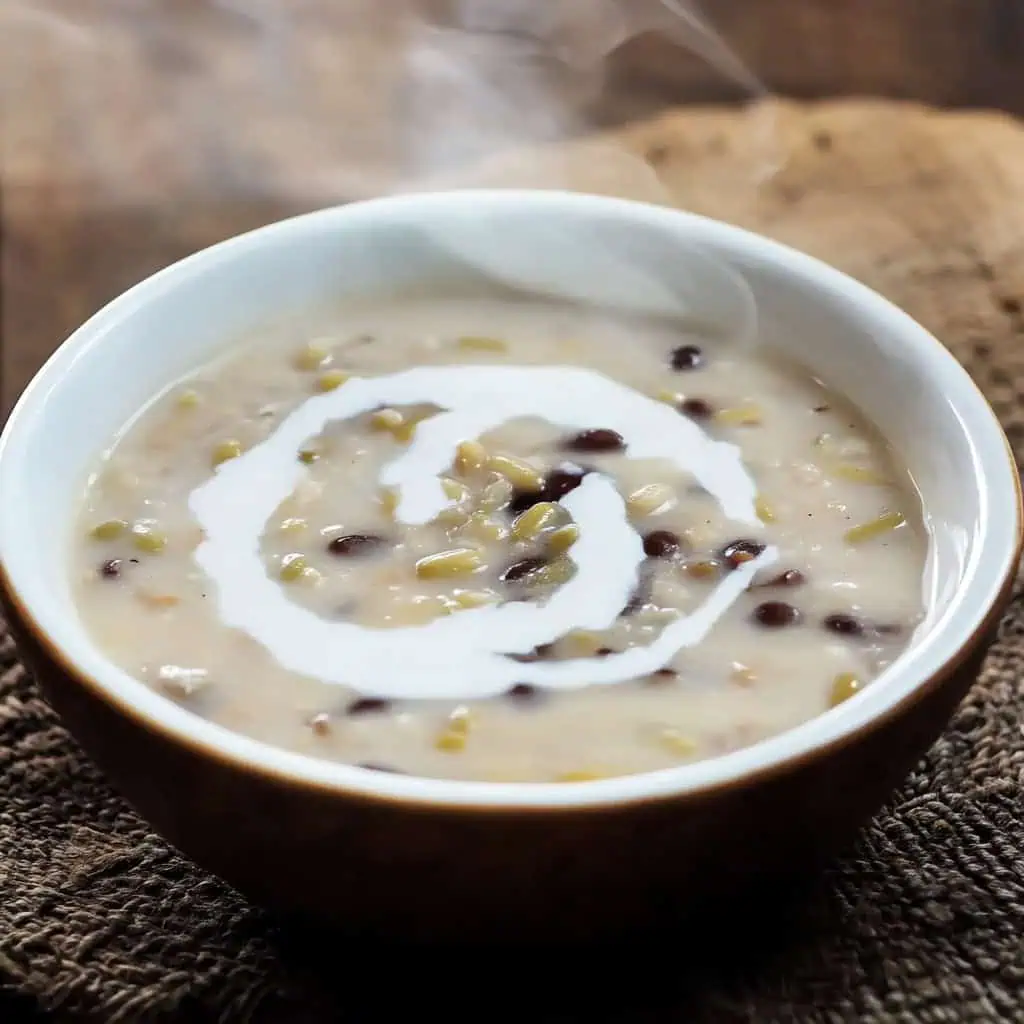



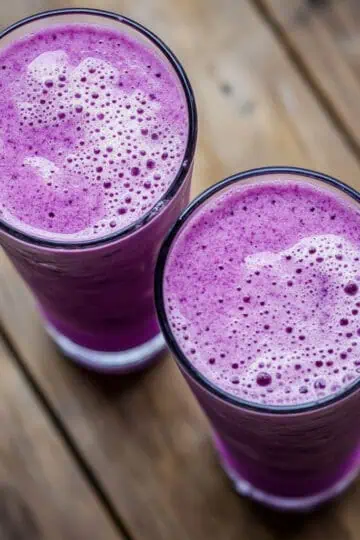
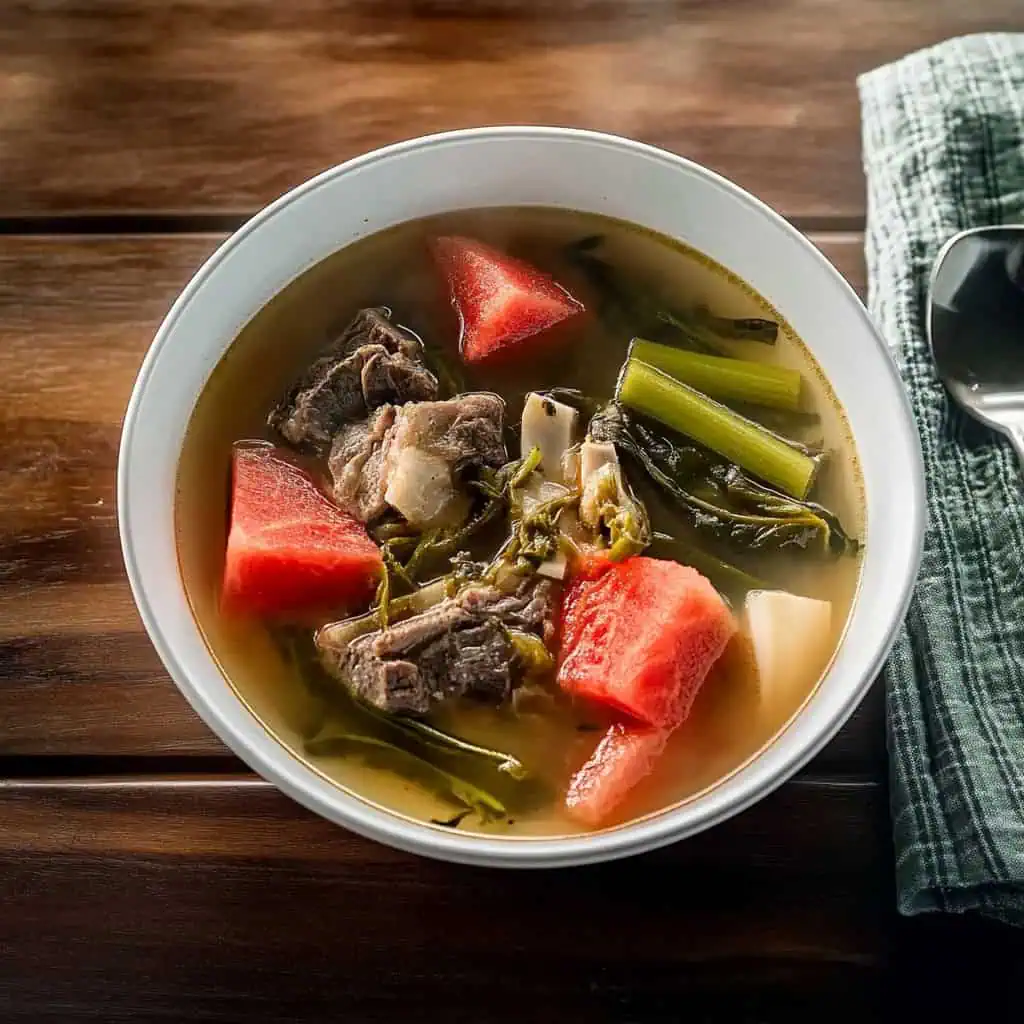




Java Burn says
Hi there! Would you mind if I share your blog with my facebook group?
There's a lot of people that I think would really enjoy your content.
Please let me know. Cheers
mitolyn reviews says
Have you ever considered writing an ebook or guest
authoring on other blogs? I have a blog based upon on the same ideas you discuss and would really like
to have you share some stories/information. I know my viewers would enjoy your work.
If you're even remotely interested, feel free to shoot me an e-mail.
Matt says
I used to be suggested this blog by means of my cousin. I am no
longer sure whether this submit is written through him as no one else recognize
such precise about my trouble. You are incredible!
Thank you!